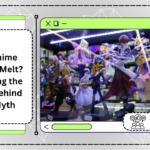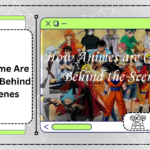In the world of anime, few debates ignite as much passion as the discussion surrounding the “Big Three.” During the 2000s, three powerhouse series—Naruto, Bleach, and One Piece—earned the prestigious title of the Big Three due to their immense popularity and cultural impact. However, many anime fans often wonder: Why isn’t Dragon Ball, one of the most iconic anime series of all time, included in this elite group?
In this article, we’ll break down what defines the Big Three, why Naruto, Bleach, and One Piece hold these titles, and explore the reasons why Dragon Ball isn’t typically counted among them.
Who Are the Big Three in Anime?
The term “Big Three” refers to three influential anime series that dominated the 2000s in terms of viewership, merchandise sales, and cultural impact. These series were widely distributed, often at the forefront of anime’s global expansion, especially in Western markets. Each of these shows captured a massive audience, both in Japan and internationally.
1. Naruto
Naruto, created by Masashi Kishimoto, follows the journey of Naruto Uzumaki, a mischievous and determined ninja with dreams of becoming the Hokage—the leader of his village. From his early days as an outcast to his eventual rise as a hero, Naruto’s story captivated audiences with its blend of intense action, emotional character arcs, and themes like perseverance, friendship, and the desire for recognition. The series aired from 2002 to 2017, including the sequel Naruto: Shippuden, and gained global recognition for its deep characters and memorable moments.
2. Bleach
Bleach, created by Tite Kubo, introduced viewers to the world of Ichigo Kurosaki, a teenager who accidentally becomes a Soul Reaper tasked with protecting the living world from malevolent spirits known as Hollows. With its intricate supernatural elements, stylish sword fights, and a unique cast of characters, Bleach became a major hit, especially due to its fast-paced battles and immersive world-building. Bleach aired from 2004 to 2012, with a final arc revival in 2022, cementing its place in anime history.
3. One Piece
One Piece, created by Eiichiro Oda, follows Monkey D. Luffy and his pirate crew as they search for the legendary treasure known as the One Piece. With its colorful art, whimsical humor, and emotionally rich storytelling, One Piece has become one of the longest-running and most beloved series in anime history. First airing in 1999, the show continues to this day, captivating new generations of fans with its vast world, intricate lore, and countless memorable characters. Luffy’s enduring journey to become the Pirate King remains a cultural phenomenon.
Why Isn’t Dragon Ball Among the Big Three?
While Dragon Ball is universally regarded as a foundational anime and has had an immense impact on the anime industry, it doesn’t fit within the specific framework of the Big Three. Here are the main reasons why:
1. Chronological Differences
The Big Three refers to anime series that rose to prominence in the 2000s. Dragon Ball, on the other hand, had its original run starting in the 1980s, with Dragon Ball Z airing through the 1990s. By the time Naruto, Bleach, and One Piece gained popularity, Dragon Ball had already established itself as a classic from an earlier generation. This generational gap means that Dragon Ball, while still beloved, doesn’t share the same contemporary influence as the Big Three in the 2000s.
2. Tone and Themes
Dragon Ball, created by Akira Toriyama, is known for its mix of action, adventure, and comedy, with high-energy battles and iconic transformations like Super Saiyan. However, its tone differs significantly from the Big Three. Shows like Naruto and Bleach often explore more intricate narratives and character development, delving deeper into darker, more mature themes such as loss, identity, and moral ambiguity. While Dragon Ball has emotional moments, its primary focus is often on action, humor, and adventure, which appeals to a broader demographic.
3. Different Era and Market Appeal
Dragon Ball’s widespread appeal comes from its cross-generational success. It became a massive hit in the 1980s and 1990s and continues to capture audiences today with revivals like Dragon Ball Super. However, this long-running success places it in a different category. The Big Three emerged during the anime boom of the 2000s, when anime was exploding internationally, particularly in North America. Dragon Ball laid the foundation for that boom, but its influence came from an earlier period, marking it as part of a different anime era.
4. Demographic Differences
Another factor that distinguishes Dragon Ball from the Big Three is its broad appeal across various age groups. While Naruto, Bleach, and One Piece primarily target teenage audiences (shonen demographic), Dragon Ball’s combination of slapstick humor, epic battles, and simple storytelling appeals to a more diverse range of viewers, including younger children and nostalgic adults. The Big Three tend to have more complex plotlines and themes, which resonate more strongly with older teenagers and young adults.
The Legacy of Dragon Ball: A Pioneering Force in Anime
Despite not being part of the Big Three, Dragon Ball is unquestionably one of the most influential anime of all time. It played a critical role in popularizing anime worldwide, especially in Western countries. Dragon Ball Z in particular set the stage for shonen anime with its high-stakes battles, training arcs, and iconic characters like Goku and Vegeta. These elements became staples in the shonen genre and directly influenced series like Naruto and One Piece.
Moreover, Dragon Ball’s lasting legacy can be seen in its ongoing success, with Dragon Ball Super continuing the story and introducing a new generation of fans to the Dragon Ball universe. Merchandising, video games, and films related to Dragon Ball continue to thrive, proving that its influence endures across multiple decades.
Conclusion: The Big Three vs. Dragon Ball
The Big Three—Naruto, Bleach, and One Piece—earned their titles by defining a generation of anime fans in the 2000s. Their combination of intricate storytelling, memorable characters, and massive cultural impact during this period distinguished them from other series. Dragon Ball, while arguably even more influential in the long term, belongs to a previous era of anime and has a broader, more all-encompassing appeal.
While Dragon Ball isn’t part of the Big Three, its legacy as a trailblazer for modern anime is undeniable. Both the Big Three and Dragon Ball continue to shape the anime landscape, each contributing to the global phenomenon that anime is today.












